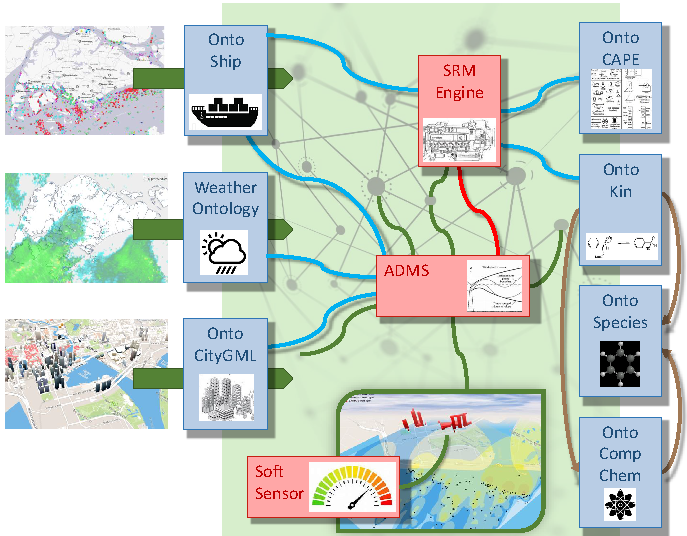Technical Report 256, c4e-Preprint Series, Cambridge
A knowledge-graph approach to combustion chemistry and interoperability
Reference: Technical Report 256, c4e-Preprint Series, Cambridge, 2020
- A Semantic Web-based knowledge-graph is built to link mechanisms, species and quantum calculations.
- A web-interface is developed to enable interaction with the knowledge-graph.
- Mechanisms can be uploaded, and species and reactions can be compared.
- Interoperability of models and data is demonstrated through a cross-domain application.
 In this paper, we demonstrate through examples how the concept of a Semantic Web based knowledge-graph can be used to integrate combustion modelling into cross-disciplinary applications and in particular how inconsistency issues in chemical mechanisms can be addressed. We discuss the advantages of linked data that forms the essence of a knowledge-graph, and how we implement this in a number of interconnected ontologies, specifically in the context of combustion chemistry. Central to this is OntoKin, an ontology we have developed for capturing both the content and the semantics of chemical kinetic reaction mechanisms. OntoKin is used to represent example mechanisms from the literature in a knowledge-graph which itself is part of an existing, more general knowledge-graph and eco-system of autonomous software agents that are acting on it. We describe a web interface which allows users to interact with the system, upload and compare existing mechanisms, and query species and reactions across the knowledge-graph. The utility of the knowledge-graph approach is demonstrated for two use-cases – querying across multiple mechanisms from the literature, and modelling the atmospheric dispersion of pollutants emitted by ships. As part of the query use-case, our ontological tools are applied to identify variations in the rate of a hydrogen abstraction reaction from methane as represented by ten different mechanisms.
In this paper, we demonstrate through examples how the concept of a Semantic Web based knowledge-graph can be used to integrate combustion modelling into cross-disciplinary applications and in particular how inconsistency issues in chemical mechanisms can be addressed. We discuss the advantages of linked data that forms the essence of a knowledge-graph, and how we implement this in a number of interconnected ontologies, specifically in the context of combustion chemistry. Central to this is OntoKin, an ontology we have developed for capturing both the content and the semantics of chemical kinetic reaction mechanisms. OntoKin is used to represent example mechanisms from the literature in a knowledge-graph which itself is part of an existing, more general knowledge-graph and eco-system of autonomous software agents that are acting on it. We describe a web interface which allows users to interact with the system, upload and compare existing mechanisms, and query species and reactions across the knowledge-graph. The utility of the knowledge-graph approach is demonstrated for two use-cases – querying across multiple mechanisms from the literature, and modelling the atmospheric dispersion of pollutants emitted by ships. As part of the query use-case, our ontological tools are applied to identify variations in the rate of a hydrogen abstraction reaction from methane as represented by ten different mechanisms.
Material from this preprint has been published in ACS Omega.
PDF (2.5 MB)



